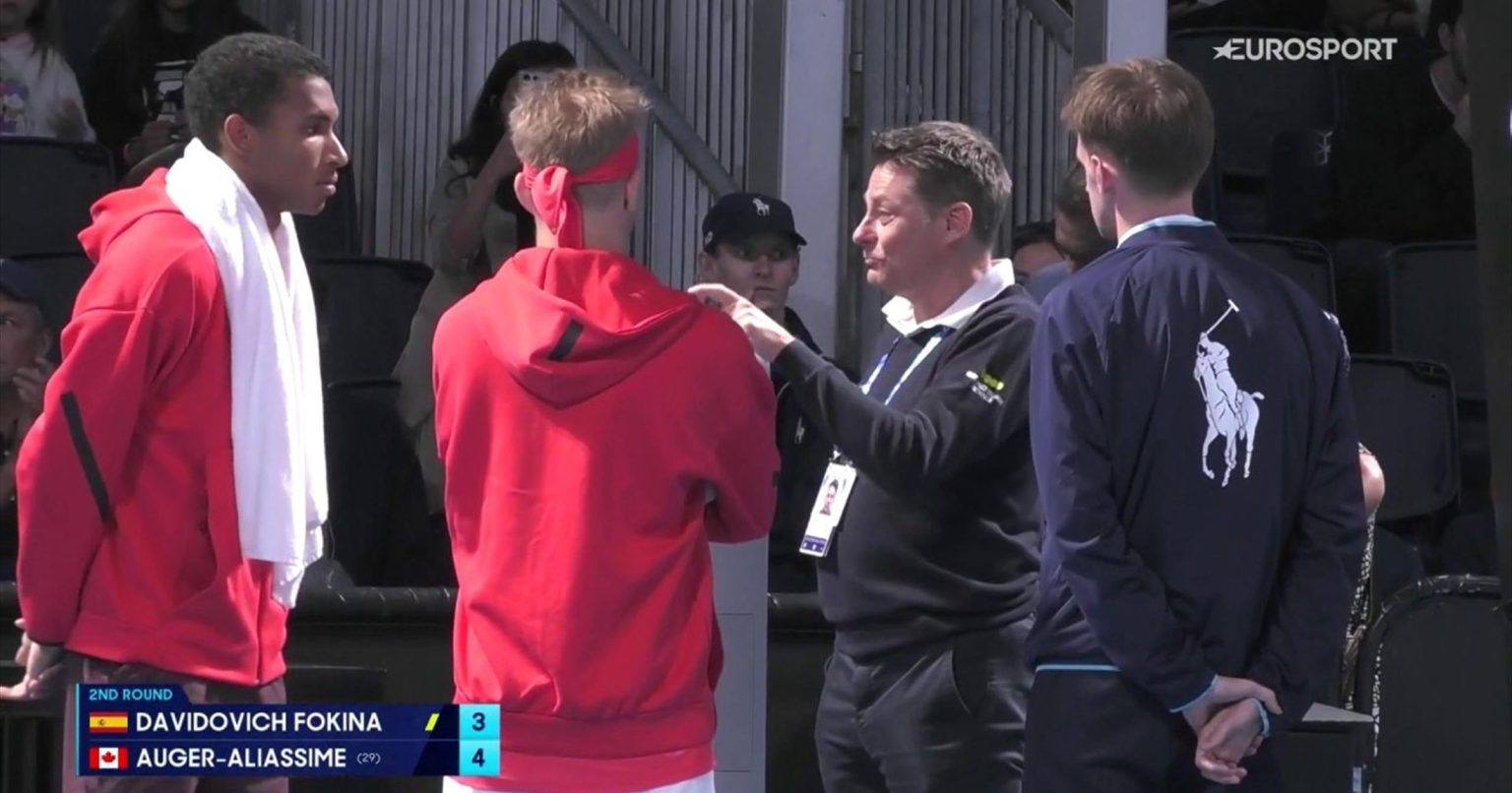The Australian Open, a grand spectacle of athleticism and sporting drama, occasionally finds itself grappling with the unexpected. Such was the case during a second-round men’s singles match between Felix Auger-Aliassime of Canada and Alejandro Davidovich Fokina of Spain. Amidst the electrifying atmosphere of Melbourne Park, an unforeseen disruption halted play, creating a surreal and somewhat comical scene that highlighted the intricate logistics of hosting a major tennis tournament. The match, already a tense affair characterized by powerful groundstrokes and strategic rallies, was abruptly interrupted by an unusual source of interference: noise pollution from a nearby court.
The cacophony emanating from the adjacent court, caused by the fervent cheering and exuberant celebrations of the crowd, reached a crescendo that proved too distracting for the players. Auger-Aliassime, a rising star known for his powerful serve and aggressive baseline game, and Davidovich Fokina, a tenacious competitor with a flair for dramatic shot-making, both found themselves struggling to maintain focus amidst the escalating din. The umpire, tasked with ensuring fair play and optimal playing conditions, initially attempted to manage the situation by appealing for quiet. However, the spirited atmosphere of the Australian Open, fueled by passionate fans and the high stakes of the tournament, made it near impossible to quell the boisterous support emanating from the adjacent court.
As the noise levels persisted, impacting both players’ ability to concentrate and execute their shots, the situation escalated. The players, visibly frustrated by the disruption and its impact on the flow of the match, began to express their concerns to the umpire. Auger-Aliassime, known for his composure on court, and Davidovich Fokina, typically an animated and expressive player, both exhibited signs of exasperation, reflecting the unusual circumstances surrounding the disruption. The umpire, recognizing the legitimacy of their concerns and the impracticality of continuing under such conditions, made the unprecedented decision to suspend play.
The suspension, a rare occurrence at a Grand Slam event, immediately triggered a wave of activity amongst officials and tournament organizers. Discussions and consultations ensued, focusing on finding a suitable solution to the unprecedented problem. The primary concern was to ensure fair and equitable playing conditions for both athletes while also minimizing disruption to the tournament schedule, a complex task considering the numerous matches and events taking place simultaneously across multiple courts. After careful deliberation and considering various alternatives, the decision was made to relocate the match.
The subsequent relocation of the Auger-Aliassime and Davidovich Fokina match to another court presented its own set of logistical challenges. Moving the players, their equipment, and the officiating crew required careful coordination and efficient execution, all while ensuring minimal impact on other matches and events already underway. Furthermore, the sudden shift to a new environment, with different court surfaces, lighting, and ambient noise levels, posed a potential adjustment for both players, adding another layer of complexity to an already unusual situation. Despite these challenges, the relocation process unfolded seamlessly, a testament to the professionalism and preparedness of the Australian Open staff.
The incident underscored the unique and often unforeseen challenges that arise in the dynamic environment of a major tennis tournament. The confluence of passionate fans, high-stakes competition, and the intricate logistics of managing multiple events can create unpredictable situations, demanding quick thinking, adaptability, and, at times, extraordinary measures. The eventual resumption of the match on a different court exemplified the tournament’s commitment to ensuring fair play and a positive experience for both players and spectators. While the disruption inevitably created a memorable moment in Australian Open history, it also highlighted the resilience and resourcefulness of the organizers in navigating unexpected challenges and maintaining the integrity of the competition. The episode served as a reminder of the intricate interplay of factors contributing to the drama and spectacle of Grand Slam tennis.

